Why They Call it Disaster
Disaster can be avoided, if you don’t go there. Yet our human nature is to go, to build, to deny omnipotent laws of nature, then suffer the consequence.
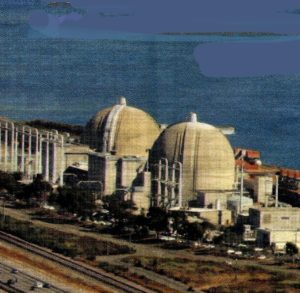

The Federal Emergency Management Agency’s (FEMA) Western Regional Director told Jerry Collamer point blank, a while back, after him peppering the guy with San Onofre Nuclear Generating Station (SONGS) post-reactor meltdown scenarios:
“That’s why they call it Disaster.”
Disaster: the past-present tense of our here and now, when we’re not careful.
Disaster can be avoided, if you just don’t go there. Yet our human nature is to go, to build, to deny the omnipotent laws of nature, then suffer that all too familiar consequence – Disaster.
That’s what Mr. FEMA / Mr. Disaster was getting at.
FEMA and First-Responders, don’t prevent Disaster. They mop up after.
But Disaster can be preempted, or avoided entirely just by doing the right thing: utilize good common sense.
It Can’t Happen Here?
Yesterday’s Los Angeles Times and Orange County Register published the reassuring words of Southern California Edison (SCE) officials and academic seismologists, claiming quake-meltdown-disaster could never happen here. The plant is designed for a 7.0 temblor and Japan’s 8.9 and the associated tsunami are “highly unlikely.”
Consider, however, a study from 2008 by the California Energy Commission called “An Assessment of California’s Nuclear Power Plants, AB 1632 Report.” It states that the region could experience larger and more frequent earthquakes than had been anticipated when the plant was designed, due to the late discovery of underground “blind thrust” faults. It goes on to recommend further study to characterize the seismic hazard, since less is known about the seismic setting than more fully studied Diablo Canyon in Central California.
The uncertainties are with regard to “continuity, structure and earthquake potential” of the nearby South Coast Offshore Fault Zone, and the faulting that connects to the Los Angeles (Newport-Inglewood Fault) and San Diego (Rose Canyon Fault) regions. There is also the potential for as yet undiscovered blind thrust faults near the plant. A Long-Term Seismic Program is recommended to consider the as yet not-fully-considered.
At the Fukushima Daiichi nuclear plant, they also claimed “It won’t happen here.” The latter plant was designed for only a 7.9 quake as the “worst case scenario.”
As well, a study from the Electric Power Research Institute admits: “The Richter scale alone does not capture the dangers or risks posed by specific quakes.” Multiple, unforeseen disasters, quake, tsunami, floods, loss of both primary and backup power, pose the real dangers to an undertaking as complicated and dangerous as nuclear fission.
The California Energy Commission study also mentioned submarine landslides could generate large local tsunamis, a fact not fully understood when SONGS was built. While some consider the 30-foot-high reinforced concrete “tsunami wall” as invincible, others have questioned its durability. Sadly, the walls protecting the Fukushima Daiichi facilities did not stop the backup generators from being flooded, causing the fail. What have the SCE engineers and academic seismologists not fully considered here, when the Big One hits?
San Onofre Earthquake – What If?
Consider SONGS’ precarious seating arrangement: on sand – over a fault – at water’s edge. Then consider its age.
A SONGS 7.5 earthquake scenario:
1) SONGS sinks into its suddenly liquified sand base / liquefaction
2) Tsunami like ocean occurrence overwhelms SONGS’ crumbling sea wall, swamping the cracking, steaming, radiating, eternally hot hell-hole that was moments before SONGS
3) Remains too hot to handle for 50,000 years, or longer. But who’s counting?
Are we prepared for that?
Or something half that?
Or a third that?
Or a quarter that?

It Can Happen
Test Model: Japan – July 16, 2007.
Kashiwazaki-Kariwa Nuclear Facility in Niigata Prefecture on the northwest coast of Japan falls victim to a 6.8 shaker. Built over a fault, in an earthquake prone region, at waters edge. Though damage to the facility was limited and “less than expected,” radioactive iodine did escape from a leaking pipe. Ground motion caused water to slosh in the spent nuclear fuel storage pool and spill into the nuclear plant’s reactor buildings. Contaminated water leaked into the Sea of Japan from damaged conduits. SCE uses both pools and dry cask storage. A loss of cooling event could be precipitated by an earthquake or terrorist event; SCE claims they are safe.
And now the ongoing post-quake-tsunami crisis at Fukushima.
Most asked question post Japanese disaster:
“Why’d you build it there?”
The engineers planned and built SONGS (before super seismic hazard mapping computer models, before they knew there was a fault sleeping beneath it) designed it to last until 2013. Not 2014 -15 – 16, or 2020 (as it has recently been approved for).
So who’ya gonna trust? The engineers who created SONGS? Building it to a 2013 end date – or SONGS owner-operator Edison, working to extend SONGS shaky, aged existence to 2020 or longer – on sand, over a fault, at waters edge?
Remember Mr. FEMA’s tutorial:
“That’s why they call it Disaster.”
Using common sense is the antidote to a SONGS disaster: 2013-end-date, game over.
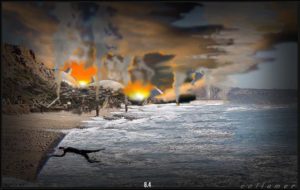

See the related story: “San Onofre Nuclear Generating Station: Scariest Workplace in the USA” by Jerry Collamer.
Jack Eidt and Jerry Collamer, founders of Wild Heritage Planners, based in Southern California, collaborated on this piece.




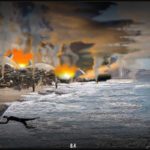
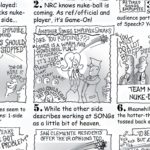
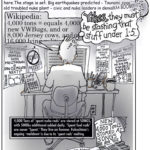






Pingback: San Onofre Nuclear Generating Station – The Scariest Workplace in the USA – By Jerry Collamer | wilderutopia.com
Jack Eidt suggested that I link the following piece of mine to this article. I am happy to do so. We approach a self-inflicted Armageddon. Time to wake up, before it’s too late.
AG
Pingback: San Onofre Nuclear Plant: Fukushima Lessons not Learned | WilderUtopia.com
The apparrent safety of nuclear is indicitive in it’s accidents.
Fukushima, NO ONE died from radiological exposure. they died from rushed evacuations, lack of medical care, panic.
Hey Lazy Reader,
We invite you to move yourself right on down to Fukushima and enjoy life there. Maybe you could further your employment as a paid nuclear commenter to help clean up the interminable mess to the ongoing disaster. Thanks for stopping by!